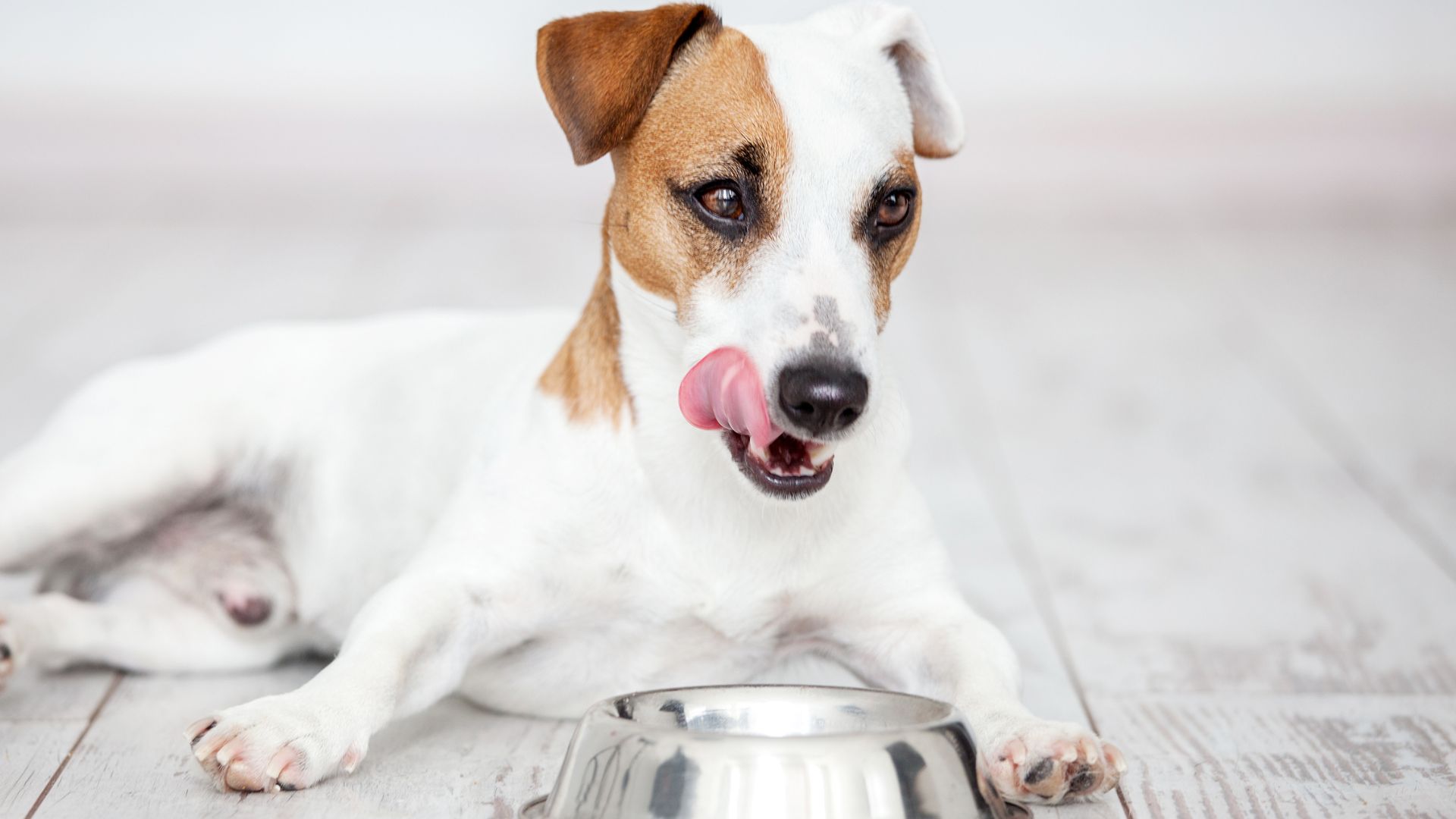If you’re reading this blog post, it’s quite likely that you have just become, or will soon become a puppy parent, owner, guardian, or whatever you prefer to go by! Getting a puppy can be both exciting and scary – the dog world is such a minefield when it comes to information on general health and wellbeing. To set our pups up for a life of health, we need to be super careful what we feed them! Here at My Pet Nutritionist, we bring you this blog post, where you will find out what is best to feed your new, or future addition!
Dietary Requirements for Puppies
Puppies require different nutrients for different functions; providing too much, or too little of some nutrients can have a detrimental effect on health, so let’s take a look at nutrients, what theyre for, and the risks of a deficiency, or over consumption of each one.
Protein
Proteins are macronutrients, and are the building blocks of the body! They’re formed by complex chains of amino acids, of which some are essential (which cannot be made by the body, so must be consumed in the diet), and others are non-essential (which can be made by a healthy body). Proteins make up everything from the fur, claws, immune system, hormones and many more components of the body.
While the body doesn’t care where the amino acids come from, we should aim to pick good quality, amino acid rich sources for our dogs – these are found in best quality in beef, chicken, pork and lamb. Sources of inferior, poor quality amino acids include wheat and rice, which we recommend avoiding completely.
Proteins build the body and aid repair as they are in a constant state of renewal and degradation.
If your puppy consumes too much protein, it may be used as an energy source, but if there is still too much present, it will just be excreted safely through the faeces.
If there is a deficiency of protein in your puppy’s diet, your puppy may experience reduced growth rates, anorexia, anaemia, alopecia, infertility, dull coat and brittle fur.
Puppies require higher amounts of protein than adult dogs because of their need for growth of new tissues, however this does not mean that owners can safely over-feed their puppies! A small amount of excess protein can be safely excreted, but too much, and excessive weight gain, and rapid growth rates can occur, especially in larger breeds – this is terrible for joints, and can lead to major issues imminently, or further down the line!
Fat
Fat is another macronutrient, and is super important in a canine diet. They are used as the primary source of energy, of stored in the Adipose tissue for use as an energy source later. Fats are also essential for temperature control, as they insulate the body, as well as acting as a cushion form trauma to major organs.
Fats can be saturated, mono-unsaturated, or poly-unsaturated. If you’re into the sciencey side of things, a saturated fat has no double bonds between carbon atoms in its chemical make up, mono-unsaturated fats have one double bond between two carbon atoms in its chemical make up, and poly-unsaturated fats have more than one double bond between carbon atoms in its chemical make up.
Dogs have a requirement for two important families of essential fatty acids – omega 3, and omega 6. Omega 3 fatty acids have incredible anti-inflammatory properties, whereas omega 6 can be inflammatory. The modern day canine consumes far more omega 6 than needed in their normal diet and day to day life, so it’s super important to get those omega 3s in the diet, including things like raw egg, raw sprats, raw salmon, tinned sardines, algal oils, fish oils etc.
Omega 3 is useful for healthy skin formation, healthy joints during growth, the transportation of fat-soluble vitamins, and modulation of the immune system.
As omega 3 is also very important for healthy cognitive function, it’s especially important in puppies! Omega 3 deficiency has also been proven to be linked with aggression in dogs!
Findings Here
Findings Here
Carbohydrates
The third of our macronutrients, carbohydrates, come in two types, available, and unavailable.
Available carbohydrates are those used for energy. They are digested through the small intestine. The metabolism of these carbohydrates provides glucose for brain function. As there’s only so much storage available for these carbohydrates, over consumption may lead to increased body fat.
Unavailable cabrohydrates cannot be digested by dogs, such as soluble and insoluble fibre. Insoluble fibres can aid good bowel health, and keep stools bulky and firm, whereas soluble fibre does the opposite, and helps stools pass easily as it draws water to them.
There is no literature available to prove this macronutrients are essential for dogs.
Vitamins A, D, E and K
These are micronutrients, and are fat-soluble vitamins, meaning they’re transported through the body in fat molecules.
Vitamin A is essential for eye and bone health, and can be found in great quantities in eggs, oily fish, carrot, broccoli, and cantaloupe melon.
Vitamin D is a hormone that promotes calcium absorption, so play a role in bone health, as well as immune function and cell growth and development. Vitamin D can only be acquired through the diet for dogs, unlike us humans who can get it from the sun. sources include salmon, egg, sardines, liver and mushrooms.
Vitamin E is an antioxodiant which protects cells from oxidative stress (damage). Sources include sunflower seeds, wheatgrass, spinach, red bell pepper and pumpkin.
Vitamin K contains K1, K2 and K3 – these are all categorised as quinones. These are essential for blood and bone health and development. Vitamin K1 can be found in leafy greens and beef liver, K2 is synthesised by bacteria in the large intestine, and K3 is a common synthetic vitamin.
Vitamins B and C
Now we move onto the water-soluble vitamins; the vitamins that are transported in water molecules around the body.
Vitamin B vitamins have similar functions to one another, and are essential for energy metabolism and tissue synthesis. The following are the 9 varieties of B vitamins:
- Thiamine
- Riboflavin
- Niacin
- Pyridoxine
- Pantothenic acid
- Biotin
- Folate
- B12 Cobalamin
- Choline
Some great sources of Vitamin B include eggs, meat, shellfish and leafy greens.
Vitamin C aids the formation of collagen for skin and joint health. When looking at the literature available regarding Vitamin C, it is not suggested that Vitamin C is essential for development or maintenance, but it is suggested that working dogs consume plenty of it for joint health due to the body going through strenuous work, and having a higher water turn over than pet dogs. If your puppy is particularly stressed, they may also benefit from additional vitamin C as it is thought that cortisol levels are affected by stress, which means there’s less vitamin C available.
Other Important Micronutrients
Calcium and Phosphorus are the two components of hydroxyapatite, which is the bone matrix that strengthens the bone. Bone contains around 99% of the body’s calcium, and 80% of the body’s phosphorus. Sources include bone, bone meal, kale, whole fish, spinach and broccoli.
Magnesium is an important part of joint health and general bodily functions. It can be found in spinach, swiss chard, kale, pumpkin seeds, tuna, bone and hempseed.
Copper is essential for general bodily functions, and helps make red blood cells, as well as supporting the immune and nervous systems, and helping to produce collagen, absorbing iron, and regulating zinc. It can be found in beef kidney, oysters, mussels and wheatgrass.
Manganese helps form healthy connective tissues, healthy bone development, blood clotting, and sex hormones, as well as regulating the metabolism of carbohydrates and fats, detoxification, calcium absorption, and blood sugar regulation. It can be found in ginger, dark leafy greens, mussels, sweet potato, pineapple and wheatgrass.
Zinc plays a massive role in skeletal health and development – essential for a growing puppy! It can be sources from oysters, beef, lamb liver, beef liver, wheatgrass and pumpkin seeds.
What is the Best Food for My Puppy?
As those of you who read our blogs frequently will have seen, we advocate for a balanced fresh food diet for your puppy! Good, healthy food is one of the main pathways to a healthy life, good physical development, great gut health, and brilliant cognitive development.
So what can fresh food look like? Fresh food doesn’t just include raw food – fresh food can be lightly cooked too! Either way, it’s minimally processed, which is our aim! Of course raw feeding is the most unadulterated, pure form of feeding a pet, and very much closest to their natural diet, but some may not be able to feed raw for a variety of reasons – these situations are where we tend to head toward a cooked diet.
When raw feeding, the ratios of raw meat to bone to offal are very similar to that of an adult dog, but with added essential fatty acids, and perhaps a little extra protein. The proteins selected must be appropriate, and beneficial for puppies, ie good quality sources of fatty acids.
When feeding a cooked diet, it is very important to follow a recipe balanced to FEDIAF guidelines. You can find an extensive array of adult dog recipes on
our shop here, and for puppies, you will get 5 fantastic recipes included in our
Ultimate Guide to a Healthy Puppy – a total bargain!
How Much Should I Feed My Puppy?
When it comes to feeding fresh food, especially raw food, to your puppy, you can expect to feed a much higher percentage of their bodyweight, the younger they are, which gradually decreases as they head toward adulthood.
If you choose to feed a homemade cooked puppy food to your new addition, you may go by calorific content and requirements, which you can read more about in our
Ultimate Guide to a Healthy Puppy!
Another important topic to discuss is the number of meals you should feed per day! This should be as follows:
- Up to 6 months we offer 3-4 meals a day.
- After 4 months it’s usually around 3 meals.
- After 6 months we tend to offer 2 meals, although some may require 3 meals.
Transitioning to Fresh Food
When you bring your new puppy home, it’s likely they have been fed a high carbohydrate dry food, unless you are lucky enough to have found a breeder or rescue centre feeding raw or cooked food. So how do you switch your puppy onto fresh food? Do you just switch? Do you gradually switch? How long should you wait? There’s probably so many questions you’re wondering about!
When picking a puppy up for the first time, it can be an enormous change for that puppy, losing his or her siblings, mum, familiar smells, familiar people – it can be a huge, stressful upheaval while they settle in. it may be wise to feed what the breeder has fed for the first few days, just to reduce the amount of sudden changes happening in one go!
When you do transition, you can do it one of two ways;
- The straight swap: simply stop feeding the previous diet, and start feeding the new one. This method is super simple, but may not be suitable for all stomachs.
- The gradual switch: this may be beneficial for those who appear to be more sensitive. Feed 75% of the previous diet, and 25% of the new one for a day or two, then a 50:50 split, followed by 25% of the previous diet and 75% of the new fresh one, ultimately finishing with 100% fresh food.
If your puppy has any tummy upsets during the transition period, they may need a little help with some slippery elm and probiotics. Kefir is a great choice for young puppies when it comes to choosing an age suitable probiotic.
We hope this article has helped you make a decision on what to feed your new addition, for optimal health now during this developmental stage, and ongoing as the pup ages into adulthood. We highly recommend purchasing our comprehensive puppy guide; The Ultimate Guide to a Healthy Puppy. If you feel you could benefit from one-to-one support to improve your healthy puppy’s diet and lifestyle, or want general advise on natural flea and worm prevention or diet, you may be interested in our Optimise package!
Team MPN x 




